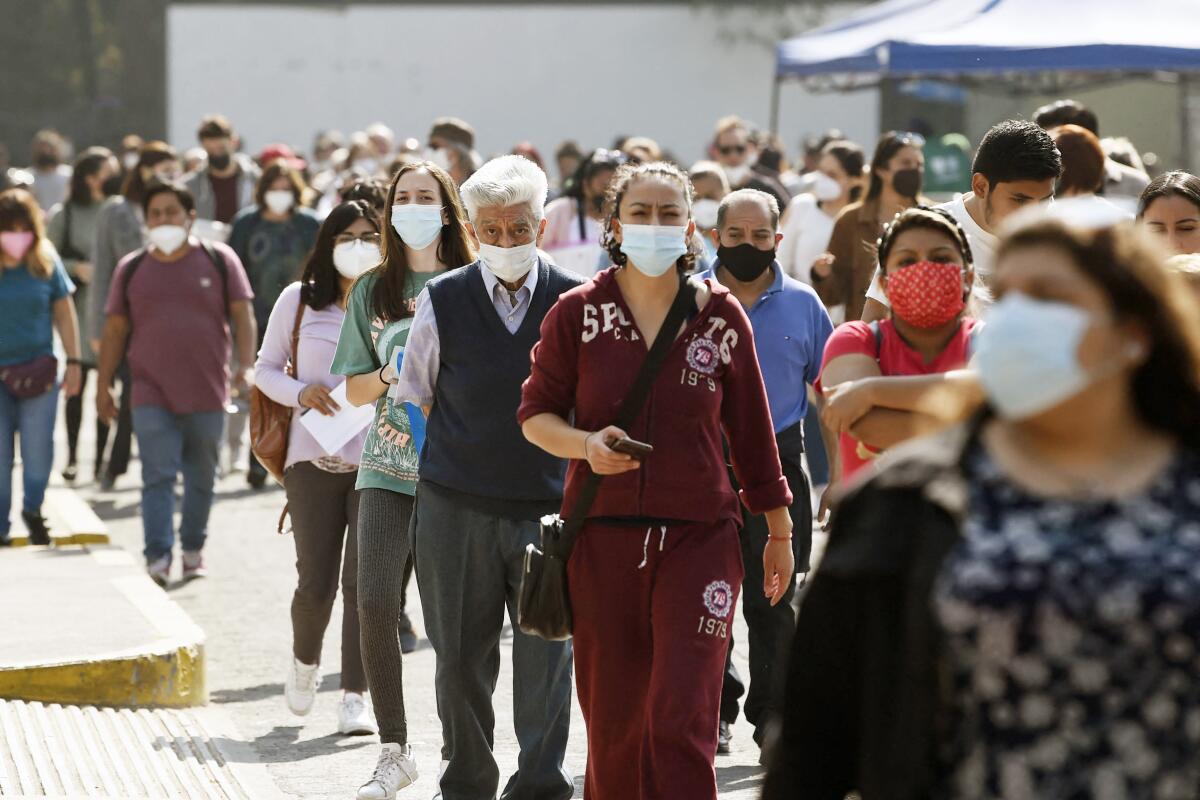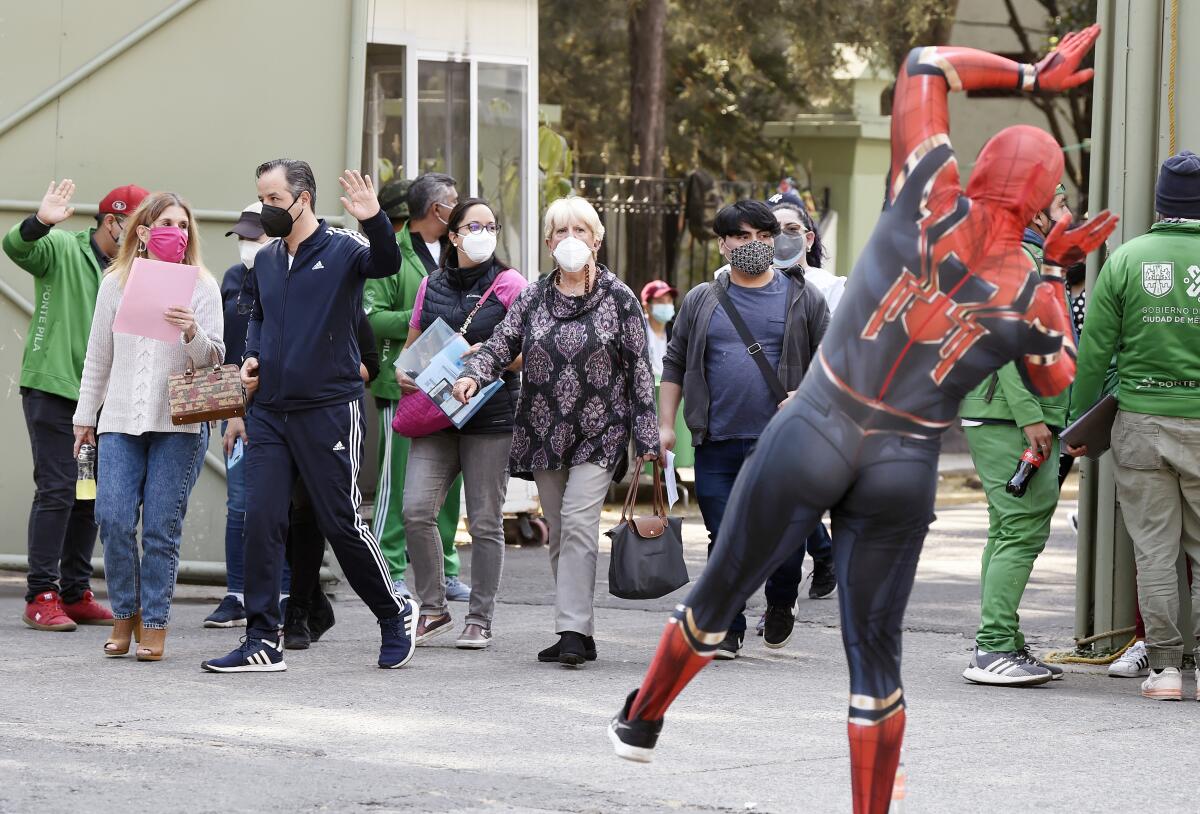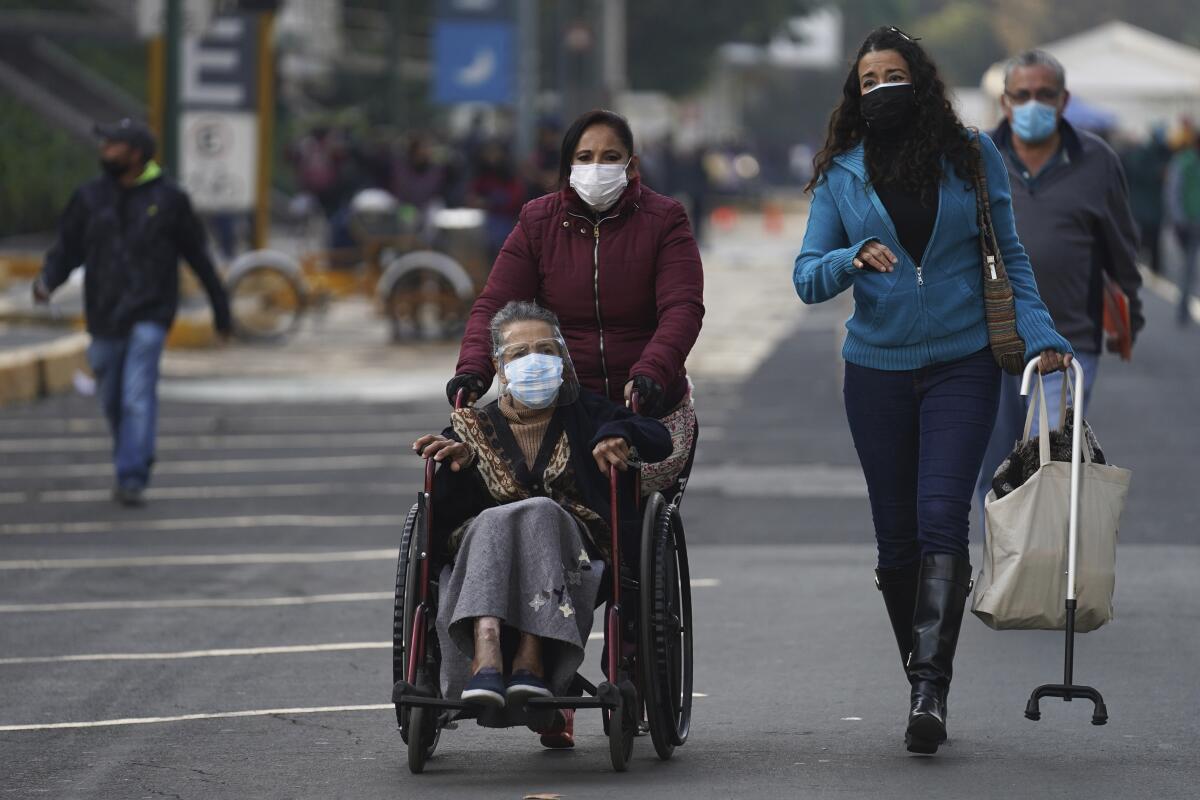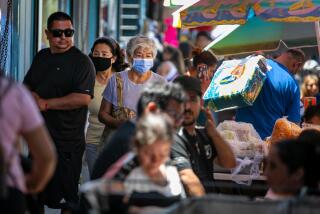Mexico takes a pandemic-as-usual approach to Omicron

- Share via
MEXICO CITY — Faced with the rise of the highly contagious Omicron variant, parts of Europe have instituted travel restrictions, shut down nonessential businesses and canceled big events. In the United States, where cases are spiking, people can wait hours for a coronavirus test.
Mexico is a different story.
New infections and deaths have been on a downward slide since the Delta peak in the summer. The beach resorts of Acapulco and Cancun are packed with tourists. Lockdowns seem like a thing of the past.
With the federal government reporting only 42 cases of Omicron, the official response has been business as usual.
“We insist, it’s the same epidemic,” Dr. Hugo López-Gatell, the undersecretary of health, said at a news conference this week, warning that “putting deliberate attention” on Omicron cases is a distraction from the bigger picture.

That view has stoked fears among scientists that the country is unprepared for a post-holiday-season Omicron wave.
They say that the only reason more cases of Omicron haven’t been found already is that not many people are looking — there is too little testing and too little genetic sequencing.
“Without detecting it in time, it will disperse quickly,” said Dr. Andreu Comas, a virologist at the Autonomous University of San Luis Potosi who is part of a consortium that monitors variants. “Instead of seeing the wolf from two kilometers away, when we find the wolf, it’ll be beside us.”
According to the scientific publication Our World in Data, Mexico performs an average of eight coronavirus tests a day for every 100,000 people — about one-50th the U.S. rate.
“The truth is we’re in a plane that doesn’t have instruments,” said Dr. Alejandro Macías, an infectious disease specialist at the University of Guanajuato who led Mexico’s response to the 2009 swine flu pandemic. “We’re living in a certain honeymoon period... We’re waiting for Omicron.”
At the Coco Wax Studio in the hip Mexico City neighborhood of Condesa, Lilian Muñoz, an eyebrow technician, said she’s followed international news reports about Omicron and worries that Mexican officials are being complacent.
She said their attitudes have trickled down to her clients, who have forgotten their masks and have gotten irritated when she’s offered them hand sanitizer.
The toll of the pandemic in Mexico, as in many countries, remains unclear.
The official death count is 299,132. But Mexican government data on “excess deaths” — how many more Mexicans are dying now compared to the years preceding the pandemic — suggest the real number could be as high as 644,599.
And when researchers tested a nationally representative sample of households last year, they found that 1 in every 4 people had developed antibodies against the coronavirus — a far higher rate than testing would suggest.

In his comments this week, López-Gatell appeared optimistic, noting that nationwide only 11% of coronavirus intensive care beds are occupied.
“If there is a fourth wave due to Omicron, we might see many cases but a much smaller proportion of hospitalizations than in previous waves … due to the effect of the vaccine,” he said.
About 73 million people — or 57% of the population — have been fully vaccinated, according to the Johns Hopkins Coronavirus Resource Center.
As for how the variant will affect Mexico and the rest of Latin America, Albert Ko, an epidemiologist at the Yale School of Public Health, said that it’s too early to tell.
Ko pointed to the mystery of why some Latin American countries — including Brazil, the focus of his research — didn’t experience the death rate that characterized the Delta wave in the United States. One possible answer is widespread previous exposure to the virus coupled with high vaccination rates.
“Throughout much of Latin America because of poverty, crowding, urbanization, there were really high transmission rates during the early phases of the pandemic and that was followed by aggressive vaccination campaigns,” Ko said.
Mexican scientists said that if the coronavirus explodes again in Mexico, the government will bear some of the responsibility.
They say the country has prioritized its economy, including the tourism industry, over stopping the spread of the virus. Mexico doesn’t require proof of a negative coronavirus test or vaccination for international travelers, and this week officials said they would allow cruise ships to dock even if they were carrying infected people.
In a recent tweet, López-Gatell said that “measures to restrict trips or close borders are of little use; they affect the economy and the well-being of communities.”
He said this week that Mexico has no plans to vaccinate children under 15 because of the low probability that they would die from the coronavirus — a comment that drew criticism from experts who pointed out that infected children could still pass the virus to more vulnerable people.
“Mexico has been facilitating the road to Omicron,” said Dr. Malaquías López Cervantes, a professor of public health at the National Autonomous University of Mexico.
Currently, all but four of Mexico’s 32 states — Aguascalientes, Baja California, Chihuahua y Sonora — appear in the least restrictive level of Mexico’s COVID-19 tier system, which recommends no limits on economic or social activities.
Local governments have been left to decide on their own measures. Mexico City this week canceled a concert by the cumbia band Los Ángeles Azules on New Year’s Eve because of worries about spreading the virus.
Ernesto Orellana, an Uber driver in Mexico City, wears two masks to protect himself on the job. He often has to remind his passengers to comply with the company’s requirement they wear masks.
“Today there are a lot of people who are relaxed,” he said. “I don’t know why they think that. We all have the information on hand. We know that this continues.”
More to Read
Sign up for Essential California
The most important California stories and recommendations in your inbox every morning.
You may occasionally receive promotional content from the Los Angeles Times.











